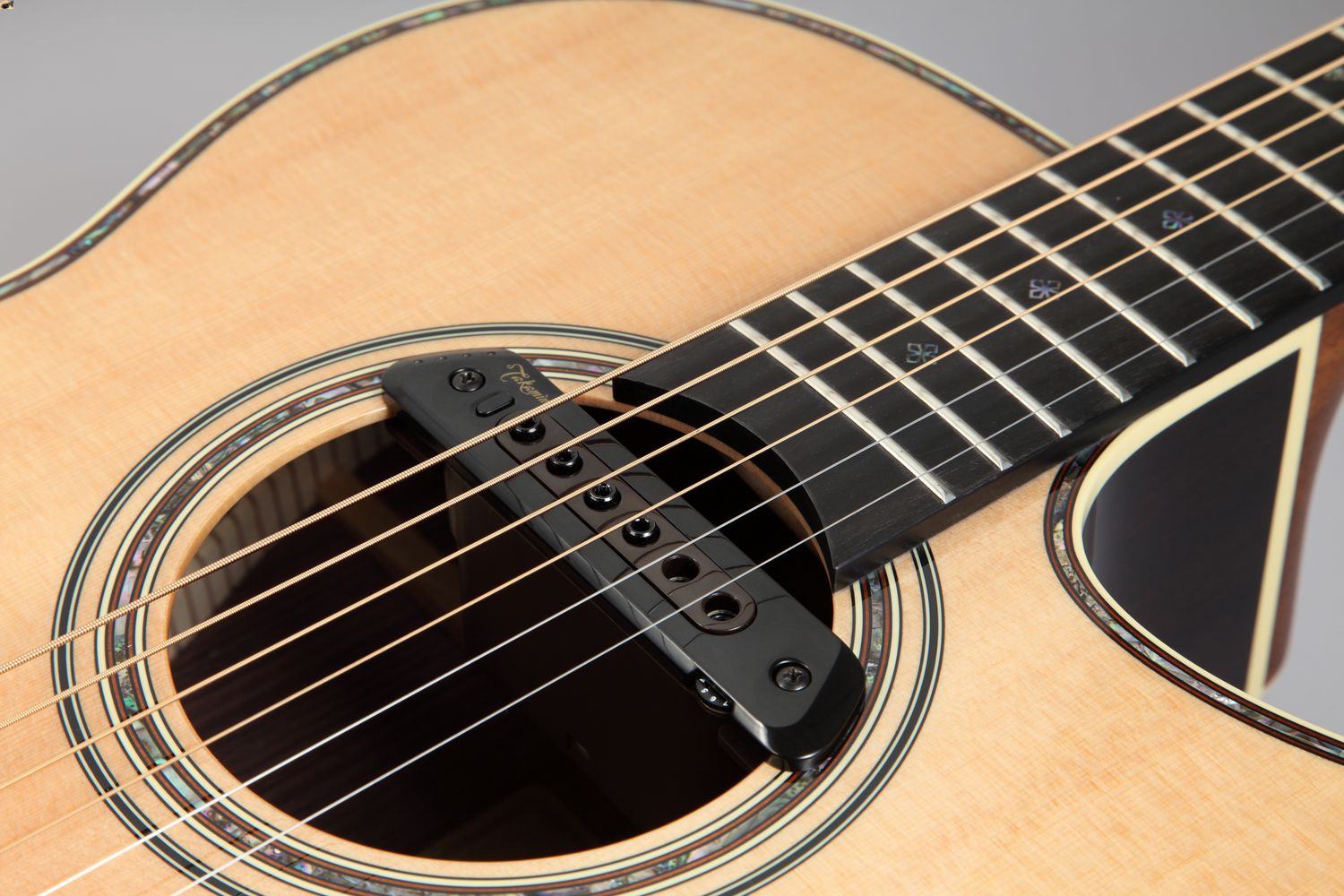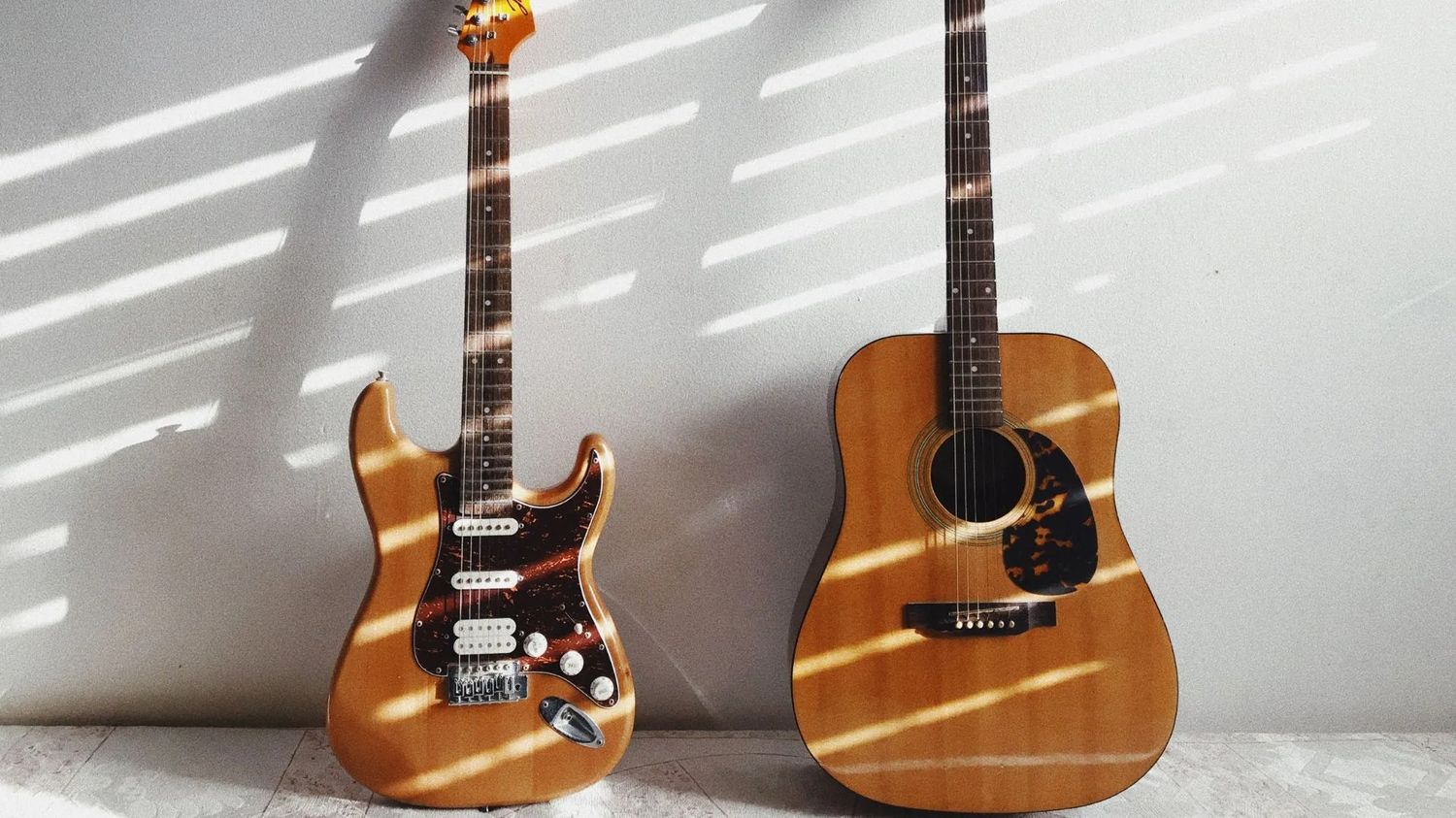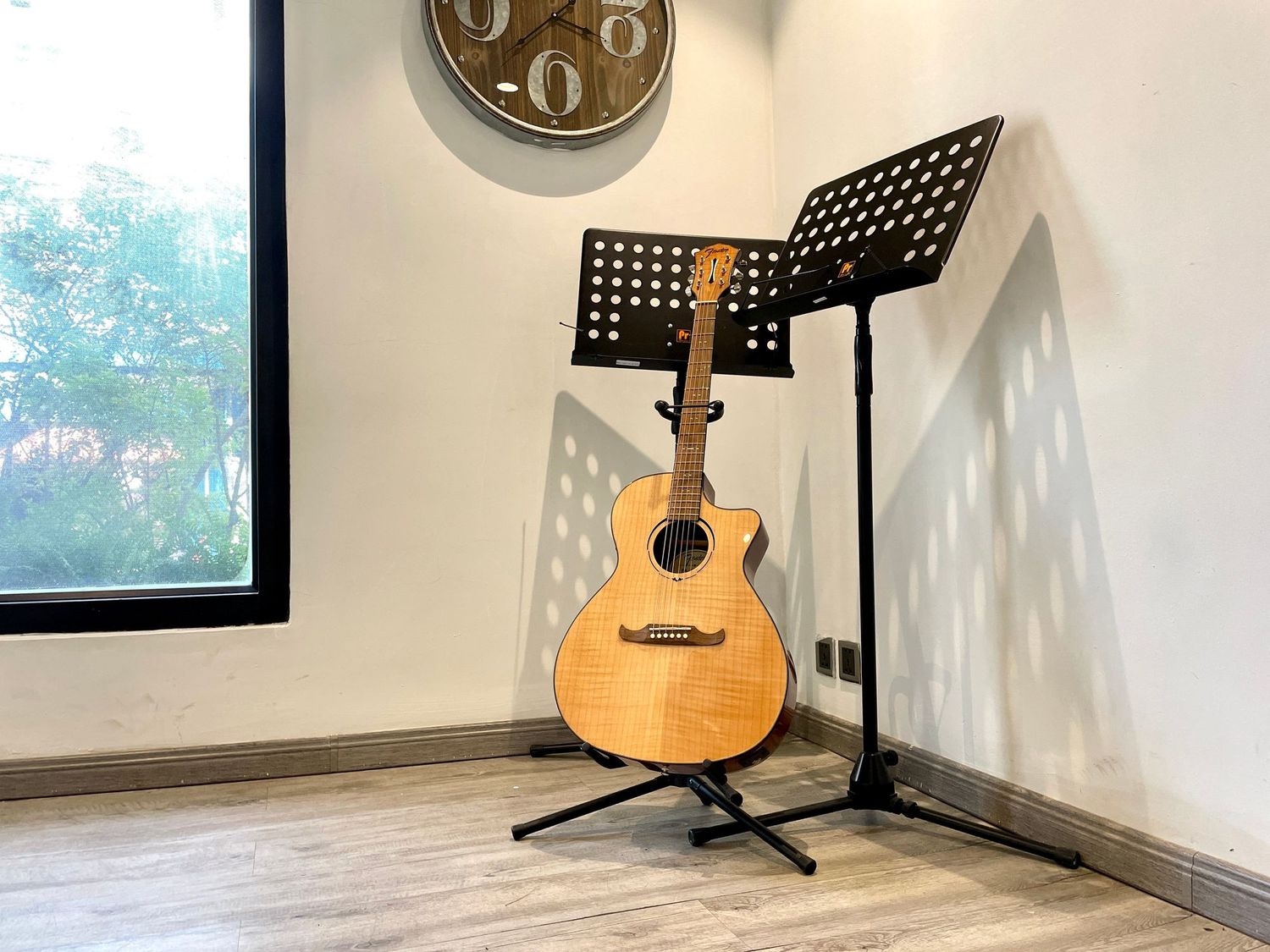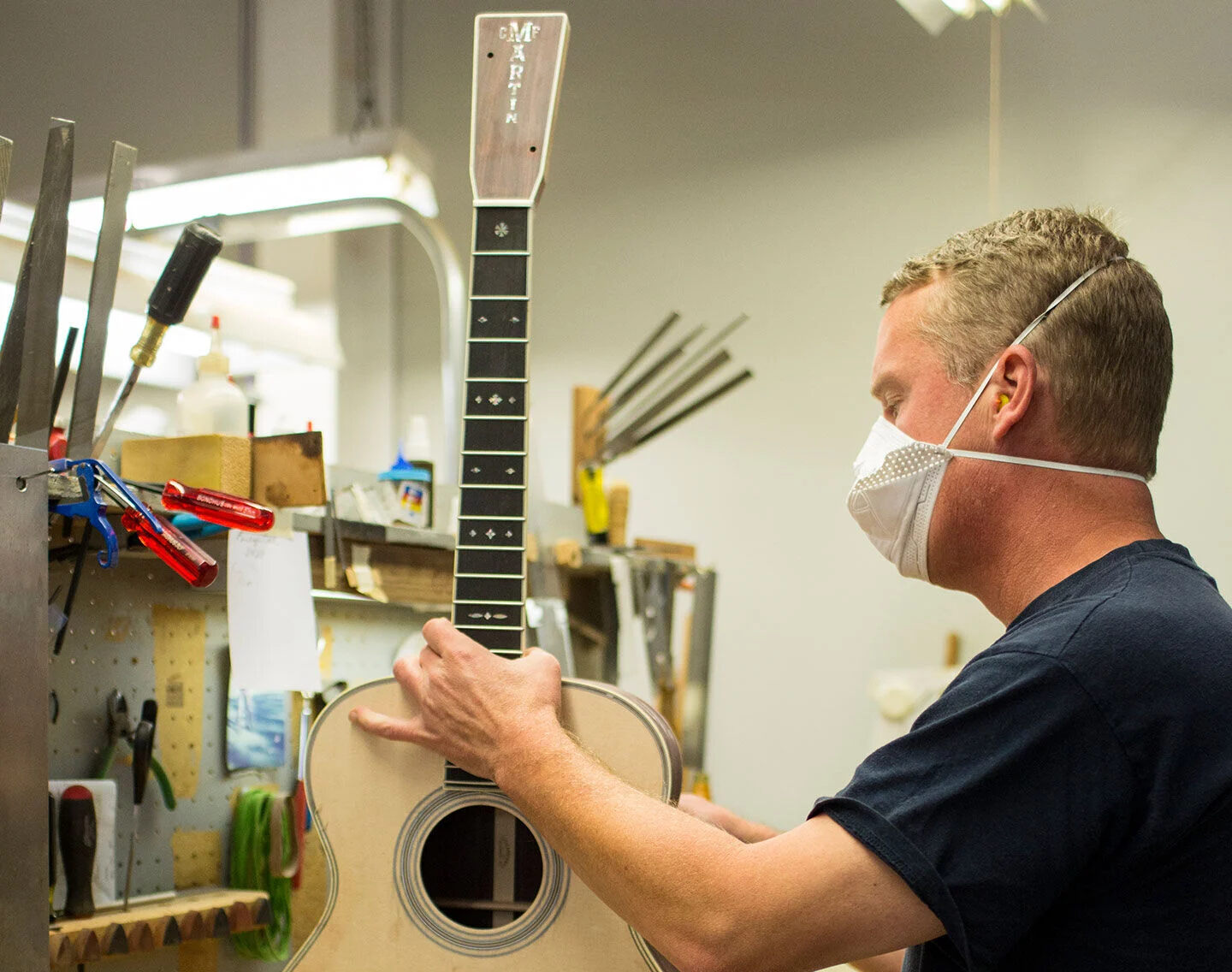Home>Production & Technology>Acoustic>How To Make An Electric Guitar Sound Like An Acoustic
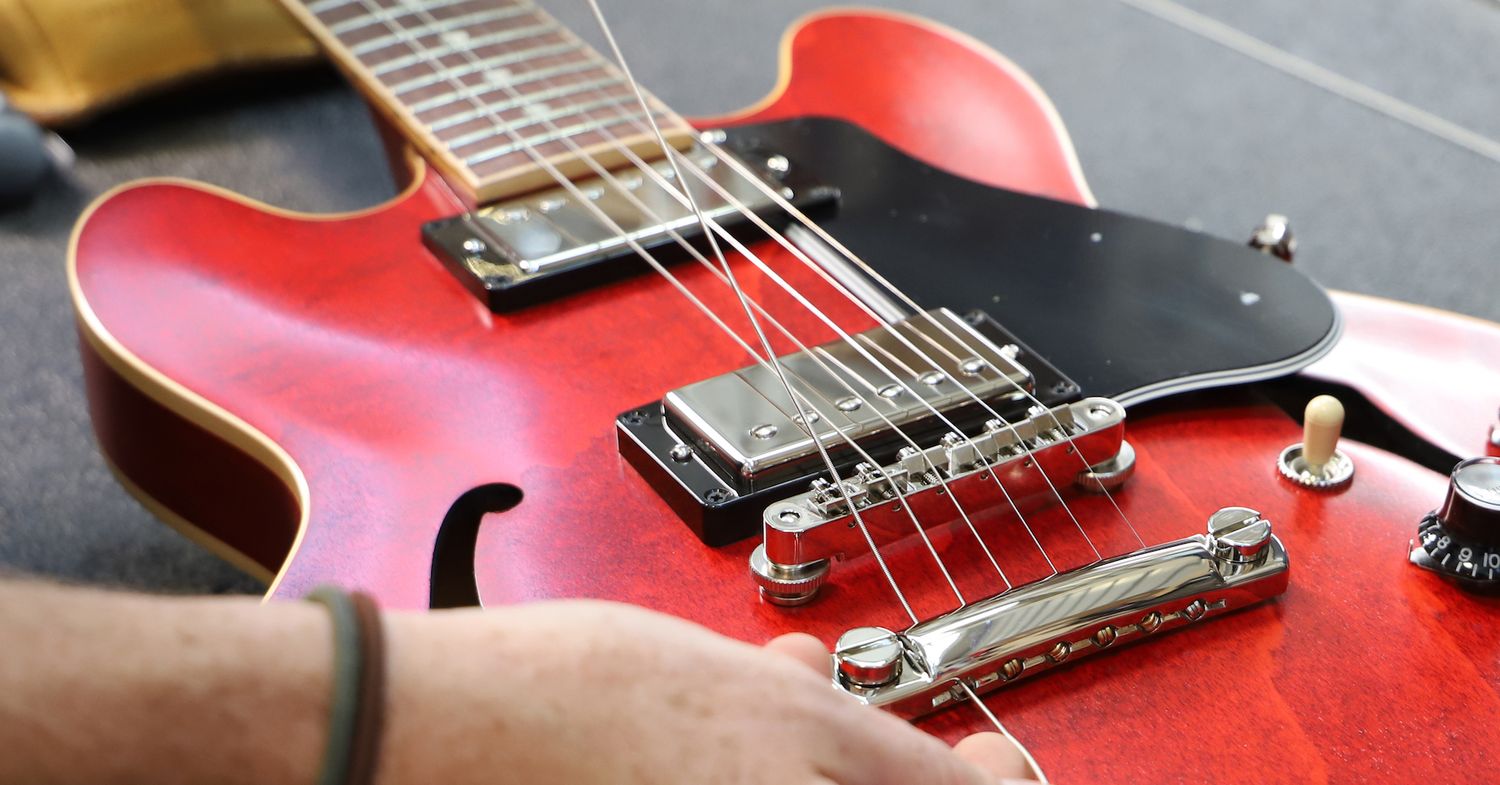

Acoustic
How To Make An Electric Guitar Sound Like An Acoustic
Published: March 10, 2024
Learn how to achieve the acoustic sound from your electric guitar with our expert tips and techniques. Transform your electric guitar into an acoustic marvel today!
(Many of the links in this article redirect to a specific reviewed product. Your purchase of these products through affiliate links helps to generate commission for AudioLover.com, at no extra cost. Learn more)
Table of Contents
Introduction
Transforming the electrifying sound of an electric guitar into the warm, resonant tones of an acoustic instrument is a captivating endeavor for musicians seeking versatility in their sonic palette. Whether you're aiming to replicate the mellowness of an acoustic guitar for a specific song or simply exploring new sonic territories, the process of making an electric guitar sound like an acoustic involves a blend of equipment, settings, effects, and playing techniques.
By harnessing the power of technology and honing your playing skills, you can unlock a realm of sonic possibilities that transcend the traditional boundaries of guitar tones. In the following sections, we will delve into the intricacies of achieving an acoustic-like sound on an electric guitar, guiding you through the selection of the right equipment, the adjustment of guitar settings, the utilization of effects and pedals, and the mastery of playing techniques. Embrace the journey ahead as we unravel the secrets to coaxing the rich, organic timbres of an acoustic guitar from your trusty electric companion.
Choosing the Right Equipment
Selecting the appropriate equipment is paramount in the quest to emulate the sound of an acoustic guitar with an electric instrument. The cornerstone of this endeavor lies in the utilization of specialized gear designed to replicate the nuanced tonal characteristics of an acoustic guitar. Here's a comprehensive guide to the essential equipment required for this sonic transformation:
-
Acoustic Simulator Pedal: The crux of the transformation process lies in the acquisition of an acoustic simulator pedal. This ingenious device is engineered to analyze the input signal from the electric guitar and manipulate it to mimic the tonal qualities of an acoustic instrument. With adjustable parameters such as body resonance, string gauge, and microphone placement, these pedals offer a versatile array of sonic sculpting capabilities.
-
Piezo-Equipped Bridge: Some electric guitars are equipped with a piezo pickup system integrated into the bridge. This innovative technology captures the natural vibrations of the strings, akin to the mechanism employed in acoustic guitars. When combined with an acoustic simulator pedal, the piezo-equipped bridge enhances the authenticity of the replicated acoustic sound.
-
High-Quality Amplification: To faithfully reproduce the nuances of an acoustic guitar, it is imperative to utilize a high-quality acoustic amplifier or PA system. These systems are tailored to accentuate the organic resonance and timbre of acoustic instruments, ensuring that the transformed electric guitar sound retains its natural warmth and depth.
-
Acoustic Guitar Strings: Opting for acoustic guitar strings, specifically designed for acoustic-electric instruments, can significantly contribute to achieving an authentic acoustic-like sound. These strings are engineered to deliver the characteristic brightness and warmth associated with acoustic guitars, complementing the sonic transformation process.
By meticulously selecting the right equipment, you lay a solid foundation for the successful emulation of an acoustic guitar's sound using an electric instrument. The seamless integration of an acoustic simulator pedal, piezo-equipped bridge, high-quality amplification, and purpose-designed strings empowers you to embark on a sonic journey that transcends the conventional boundaries of electric guitar tonality. With the essential equipment in place, you are poised to delve into the intricacies of adjusting guitar settings, harnessing effects and pedals, and mastering playing techniques to further refine the acoustic-like sound of your electric guitar.
Adjusting the Guitar Settings
The process of adjusting the guitar settings plays a pivotal role in shaping the tonal characteristics of an electric guitar to closely resemble those of an acoustic instrument. By meticulously fine-tuning various parameters, you can effectively emulate the organic resonance, warmth, and dynamic range associated with acoustic guitars. Here's a detailed exploration of the key settings and adjustments that contribute to this transformative sonic endeavor:
1. Tone Control:
The tone control knob on the electric guitar serves as a fundamental tool for sculpting the overall timbre of the instrument. When aiming to emulate the mellowness and warmth of an acoustic guitar, it is advisable to roll off the high frequencies by dialing down the tone control. This adjustment attenuates the sharpness and brightness of the electric guitar's sound, imparting a smoother and more rounded tonal character reminiscent of an acoustic instrument.
2. Pickup Selection:
The selection of pickups significantly influences the tonal palette of an electric guitar. When striving to achieve an acoustic-like sound, opting for the neck pickup can yield favorable results. The neck pickup tends to produce a warmer, fuller sound with enhanced low-end response, akin to the tonal profile of acoustic guitars. By engaging the neck pickup, you can infuse your electric guitar with a more resonant and organic sonic demeanor, aligning it closer to the acoustic realm.
3. Volume Control:
Careful manipulation of the volume control on the electric guitar can contribute to the emulation of acoustic tonal characteristics. Slightly rolling back the volume knob imparts a softer attack and a more subdued, dynamic response, akin to the nuanced articulation of acoustic guitar playing. This adjustment facilitates a more expressive and responsive sonic output, enhancing the overall authenticity of the transformed sound.
4. EQ Settings:
Incorporating subtle adjustments to the EQ settings on the amplifier or pedal board can further refine the acoustic-like qualities of the electric guitar. Modest boosts in the midrange frequencies and gentle attenuation of the high frequencies can impart a warmer, more resonant tonal profile, closely mirroring the natural timbres of acoustic instruments. By delicately shaping the EQ settings, you can infuse your electric guitar with the rich, organic textures characteristic of acoustic guitars.
By meticulously manipulating these fundamental guitar settings, you can effectively bridge the sonic disparity between electric and acoustic instruments, culminating in a remarkably authentic emulation of acoustic tonal qualities. These nuanced adjustments, when combined with the utilization of effects and pedals, serve as the cornerstone of the transformative process, enabling you to craft a captivating sonic tapestry that blurs the boundaries between electric and acoustic guitar sounds.
Using Effects and Pedals
The utilization of effects and pedals constitutes a pivotal phase in the endeavor to transform the sound of an electric guitar into an acoustic-like resonance. By harnessing a diverse array of effects and pedals, you can introduce nuanced sonic manipulations that emulate the organic timbres and textures inherent to acoustic instruments. Here's an in-depth exploration of the effects and pedals that play a transformative role in this sonic metamorphosis:
1. Reverb:
Reverberation stands as a quintessential effect in replicating the spatial ambiance and natural resonance associated with acoustic environments. By integrating a moderate amount of reverb, you can infuse the electric guitar's sound with a sense of depth and spaciousness, akin to the reverberant qualities inherent in acoustic spaces. This imparts a luscious, immersive quality to the transformed sound, enhancing its authenticity and enveloping the listener in a captivating sonic atmosphere.
2. Compression:
Employing a subtle compression effect can contribute to refining the dynamic response and articulation of the electric guitar, aligning it more closely with the nuanced playing characteristics of acoustic instruments. By gently compressing the signal, you can achieve a more consistent and controlled sonic output, accentuating the expressive subtleties and nuances inherent in acoustic guitar playing. This effect enhances the overall responsiveness and tonal balance, enriching the acoustic-like qualities of the transformed sound.
3. Chorus:
Introducing a touch of chorus effect can bestow a shimmering, ethereal quality to the electric guitar's sound, reminiscent of the natural chorusing inherent in acoustic instrumentations. The subtle modulation introduced by the chorus effect imparts a sense of richness and dimension to the transformed sound, enhancing its organic resonance and imbuing it with a captivating sense of movement. This effect contributes to the emulation of the natural, multi-dimensional tonal textures characteristic of acoustic guitars.
4. EQ Shaping:
Delicately shaping the EQ parameters through the utilization of equalization pedals or effects enables you to further refine the tonal characteristics of the electric guitar, aligning them with the rich, organic timbres of acoustic instruments. By sculpting the frequency response with precision, you can accentuate the warmth, clarity, and natural resonance of the transformed sound, fostering a sonic tapestry that closely mirrors the tonal intricacies of acoustic guitars.
5. Acoustic Simulator Pedal Enhancements:
Leveraging the capabilities of the acoustic simulator pedal, in conjunction with effects and pedals, allows for a comprehensive sonic sculpting process. By fine-tuning the parameters of the acoustic simulator pedal in tandem with other effects, you can achieve a seamless integration of acoustic-like tonal qualities, enriching the transformed sound with a heightened sense of authenticity and depth.
By skillfully incorporating these effects and pedals into the sonic transformation process, you can elevate the electric guitar's sound to resonate with the organic warmth, resonance, and expressive nuances characteristic of acoustic instruments. This harmonious fusion of effects and pedals serves as a testament to the boundless creative potential inherent in the realm of guitar tonality, transcending conventional boundaries to unveil a captivating sonic landscape that blurs the distinction between electric and acoustic guitar sounds.
Playing Techniques
Mastering specific playing techniques is pivotal in authentically replicating the nuanced tonal qualities and expressive nuances of an acoustic guitar using an electric instrument. By embracing a diverse array of playing techniques, you can imbue the transformed sound with a heightened sense of organic resonance, dynamic responsiveness, and emotive articulation, akin to the characteristics inherent in acoustic guitar playing. Here's an in-depth exploration of the playing techniques that play a transformative role in this sonic metamorphosis:
-
Fingerpicking: Embracing the art of fingerpicking allows for the cultivation of intricate, melodically rich textures that closely mirror the expressive nuances of acoustic guitar playing. By delicately plucking the strings with the fingertips, you can evoke a resonant, organic timbre that resonates with the warmth and intimacy characteristic of acoustic instruments. The nuanced interplay between the fingers and the strings fosters a heightened sense of tonal articulation and dynamic range, enriching the transformed sound with a captivating sense of depth and emotive resonance.
-
Hybrid Picking: Incorporating hybrid picking techniques, which involve a combination of pick and finger plucking, enables you to achieve a versatile sonic palette that transcends the conventional boundaries of electric guitar tonality. By deftly integrating pick strokes with finger plucks, you can infuse the transformed sound with a diverse array of tonal textures, ranging from percussive attack to mellifluous resonance. This technique enhances the expressive versatility of the electric guitar, aligning it more closely with the nuanced playing characteristics of acoustic instruments.
-
Dynamic Articulation: Embracing dynamic articulation through subtle variations in picking intensity and finger pressure allows for the cultivation of a rich, expressive sonic demeanor that mirrors the organic nuances of acoustic guitar playing. By delicately modulating the attack and release of notes, you can imbue the transformed sound with a heightened sense of emotive resonance and tonal depth. This dynamic interplay fosters a captivating sonic narrative, enriching the sonic transformation with a sense of expressive authenticity and organic warmth.
-
Open Tunings: Exploring open tunings, such as DADGAD or Open D, expands the sonic horizons of the electric guitar, enabling you to evoke the resonant, harmonically rich tonal qualities characteristic of acoustic instruments. By reimagining the tuning configuration of the guitar, you can unlock a realm of evocative chord voicings and resonant harmonies, enriching the transformed sound with a sense of harmonic depth and tonal complexity. This exploration of open tunings fosters a sonic landscape that transcends traditional tonal boundaries, unveiling a captivating realm of expressive possibilities.
By skillfully mastering these playing techniques, you can elevate the transformed sound of the electric guitar to resonate with the organic warmth, resonance, and expressive nuances characteristic of acoustic instruments. This harmonious fusion of playing techniques serves as a testament to the boundless creative potential inherent in the realm of guitar tonality, transcending conventional boundaries to unveil a captivating sonic landscape that blurs the distinction between electric and acoustic guitar sounds.
Conclusion
In the realm of musical exploration, the endeavor to transform an electric guitar into an acoustic-like instrument stands as a testament to the boundless creative potential inherent in the world of guitar tonality. Through a meticulous fusion of equipment selection, guitar settings adjustments, effects and pedals utilization, and mastery of playing techniques, musicians can embark on a transformative sonic journey that transcends the conventional boundaries of guitar sounds.
By meticulously selecting the right equipment, including the integration of an acoustic simulator pedal, piezo-equipped bridge, high-quality amplification, and purpose-designed strings, musicians lay a solid foundation for the successful emulation of an acoustic guitar's sound using an electric instrument. This seamless integration empowers artists to delve into the intricacies of adjusting guitar settings, harnessing effects and pedals, and mastering playing techniques, thereby refining the acoustic-like sound of the electric guitar.
The process of adjusting the guitar settings plays a pivotal role in shaping the tonal characteristics of an electric guitar to closely resemble those of an acoustic instrument. By fine-tuning various parameters such as tone control, pickup selection, volume control, and EQ settings, musicians can effectively bridge the sonic disparity between electric and acoustic instruments, culminating in a remarkably authentic emulation of acoustic tonal qualities.
The utilization of effects and pedals constitutes a transformative phase in the sonic metamorphosis, allowing musicians to introduce nuanced sonic manipulations that emulate the organic timbres and textures inherent to acoustic instruments. By skillfully incorporating reverb, compression, chorus, EQ shaping, and acoustic simulator pedal enhancements, artists can elevate the electric guitar's sound to resonate with the organic warmth, resonance, and expressive nuances characteristic of acoustic instruments.
Mastering specific playing techniques is pivotal in authentically replicating the nuanced tonal qualities and expressive nuances of an acoustic guitar using an electric instrument. By embracing fingerpicking, hybrid picking, dynamic articulation, and open tunings, musicians can imbue the transformed sound with a heightened sense of organic resonance, dynamic responsiveness, and emotive articulation, akin to the characteristics inherent in acoustic guitar playing.
In conclusion, the journey to make an electric guitar sound like an acoustic is a testament to the endless possibilities of sonic exploration. By embracing a holistic approach that encompasses equipment selection, guitar settings adjustments, effects and pedals utilization, and mastery of playing techniques, musicians can transcend the conventional boundaries of guitar tonality, unveiling a captivating sonic landscape that blurs the distinction between electric and acoustic guitar sounds.

